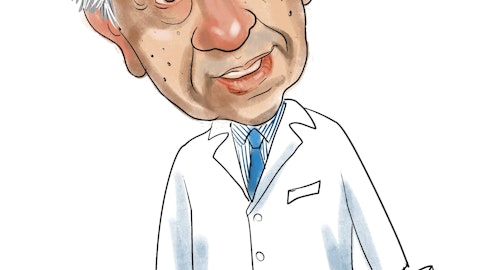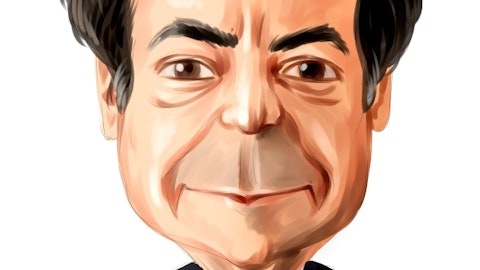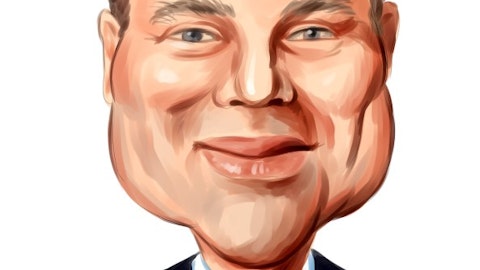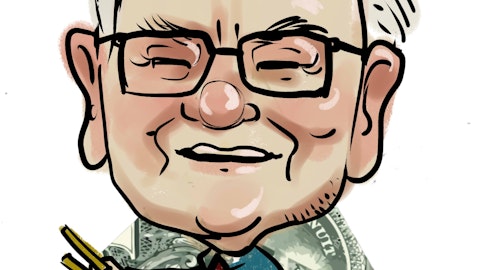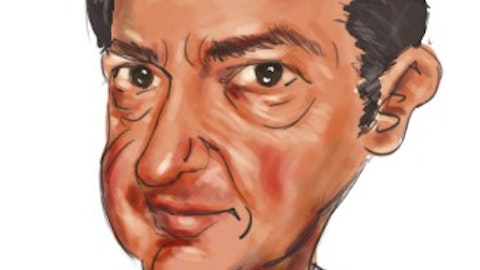Investors can make just as much profit investing in high growth, large-cap industry leaders as they can investing in distressed securities. Just ask David Tepper.
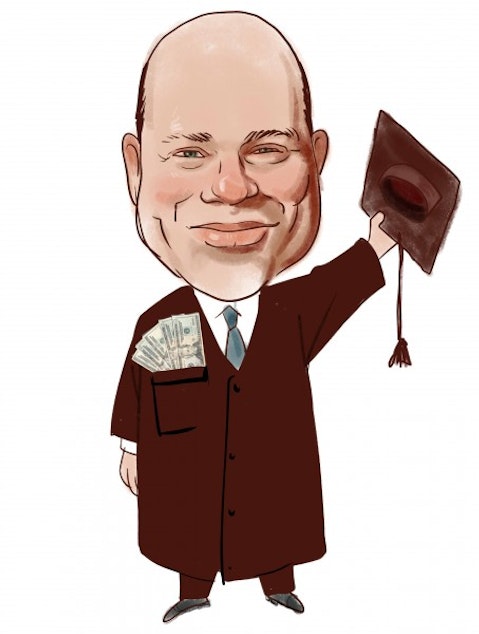
Tepper has become one of the world’s richest men by investing in distressed stocks. He makes his investments through his fund Appaloosa Management. The fund, which Tepper co-founded with Jack Walton in 1993, became famous in 2009 for buying distressed banks – a move that incidentally netted the firm $7 billion. But, Appaloosa Management was performing well long before that. In fact, the fund had a cumulative return of 1335% in the ten years from 2001 to 2010, compared to just 16.4% for the S&P 500, all thanks to distressed investing. Specifically, Tepper uses a global macro approach to identify opportunities for investment, then looks for distressed companies that will help leverage that opportunity.
Because of this, Tepper keeps the Appaloosa Management portfolio relatively narrow in scope. According to his 13F filed February 14, the fund had just 29 stock positions, collectively valued at $764.82 million, at the end of the fourth quarter. Of those, the five largest made up roughly half of Appaloosa Management’s portfolio at the end of December. They included, in order from largest to smallest, CVR Energy (CVI), Goodyear Tire & Rubber (GT), Apple (AAPL), Dean Foods (DF) and Boston Scientific (BSX). What struck us about the Appaloosa Management portfolio wasn’t so much its largest positions, but what it added.
Boston Scientific
Boston Scientific, for instance, was a new position for the fund. For Appaloosa Management to buy in so heavily that its stake in the medical device company would take up roughly 6% of its portfolio, making it the fifth largest position, there must be something pretty special going on with this stock. Appaloosa Management had $46 million invested in Boston Scientific at the end of the fourth quarter. Lee Cooperman, Ray Dalio, and Jim Simons’ Renaissance Technologies are also bullish about BSX.
Boston Scientific develops, manufactures and sells a variety of interventional medical devices worldwide. The company offers a wide range of cardiovascular products, like the catheters used in angioplasty and defibrillators, as well as grafting materials. Stock in the company recently traded for $5.92, which is toward the lower end of its 52-week range ($5.01-$7.96) and 40 cents higher than the average share price when Tepper bought in ($5.52 a share). Analysts give Boston Scientific a mean one-year target estimate of $6.71, suggesting that the company should recover some of its loss in share price. The company is priced at 12.33 times its forward earnings and at just 0.8 times its book value, which is definitely low enough to be in its favor. However, analysts expect that the company’s earnings will shrink 12.85% a year over the next five years, versus expectations that its industry will increase 18.07%.
That could all change of course. Boston Scientific has an average EPS beat rate of 35.8%. On February 2, when it announced its Q4 2011 earnings, the company’s EPS beat analyst estimates 13 cents to 8 cents. It was the third time in a row that the company beat analyst estimates so soundly. But, we don’t expect the company to turn around any time soon. The company also missed revenue expectations. That sent the stock south for a little while, but it is holding steady now – largely owing to its low pricing and rumors that the company could be taken over by private equity. Given Tepper’s involvement, we think the latter could be the case – making Boston Scientific a great speculative play. It is priced low enough to be an okay investment in the short term but if the company is taken over the returns could be magical.
Oracle
Appaloosa Management also opened a position in Oracle (ORCL) during the fourth quarter. It had $34 million, or around 4.47%, of its portfolio invested in the company at the end of December. Oracle develops a variety of software and provides a range of services, primarily for businesses or business-related, like networking solutions, cloud computing and Web commerce. Oracle has struggled a bit lately. When it reported its performance on December 20, the company fell short of analyst estimates, with regard to both its EPS (54 cents to 57 cents) and its revenue ($8.8B versus $9.23B).
Oracle recently traded at $28.55 a share. In comparison, the stock has a 52-week range of $24.72 to $36.50 and its mean one-year target estimate is $33.13. We can see that Oracle is expected to recover most of the ground it lost. The company also offers a 24 cents dividend (0.80% yield), which isn’t much but it is more than many other companies are offering right now. The company has a forward P/E of 11.15 and a P/B ratio of 3.4. Analysts estimate its earnings will go up by an average of 12.08% a year over the next five years, versus expectations of 19.84% for its industry.
In other words, Oracle is priced really low right now and is poised to pop, at least in the short term, but we think there is more to consider. For one, the name “Oracle” is practically synonymous with “enterprise computing” but today, and going forward, “cloud computing” is where it’s at. There are some things that Oracle does very well but right now the company is buying up applications suited to cloud computing rather than building on its existing opportunities.
We think Oracle can grow its earnings by 10% annually over the next 5 years. This means Oracle will be trading at a PE ratio of 9 by the end of 2014. Investors got used to low PE ratios since 2008 but blue-chip stocks won’t trade at these low multiples forever. We think Oracle will be able to deliver double digit annual returns over the next three years. Oracle isn’t the only cheap tech giant with low PE ratios either. Apple (AAPL), Microsoft (MSFT), Hewlett-Packard (HPQ) and many others are trading at single digit 2014 PE ratios. It’s time to buy tech stocks.
